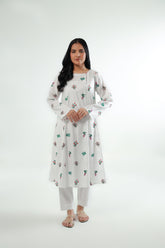Clothing Care
Learn the washing care symbol labels and always adhere to the directions, which have been tried and tested by professionals in a lab to ensure the quality of our clothing.
SYMBOLS
1. WASHING
Machine Wash. Keep the temperature within the range indicated.
Through manual labor/ Hand wash. Avoid going above 40 degrees.
By hand or machine, wash at the recommended temperature while using a brief spin programme.
Dry clean. Use of water is prohibited.
Brighteners and bleach
Bleach is not permitted.
2. IRONING
Lack of iron resistance in clothing
Clothing items that can be ironed at the specified temperaturee.
3. Dry CLEANING
Use any kind of solvent.
Utilizing only minerals.
Perchloroethylene is used to clean.
Garments that need to be professionally cleaned because they can’t be washed.
4. DRY
Without wringing or shaking it beforehand, hang the damp item of clothing on a rail or clothes line inside or outside the house.
To enable the clothing to dry, lay it down on a flat surface.
A tumble dryer with a moderate heat setting is usable.
No use for a tumble dryer.
Practical advice
DO I NEED TO WASH THIS CLOTHING?
Airing and brushing a clothing that is not soiled may be enough in some cases. Your clothes will last longer and you may conserve energy.
DETERGENT
The environment will benefit if you use detergent with eco-friendly labelling. Try not to use more detergent than what the bottle’s directions call for. More frequent use may cause skin issues and stains on clothing.
SOFTENER
Softener causes excessive amounts of environmental damage and unnecessary waste.
BLEACH
Use bleach for no more than an hour in cool water. Never use steel, bronze, or iron containers.
A DOWN FILL
Tennis balls should be placed in the washing machine to ensure that the cushioning is distributed evenly.
Chunky knit clothing
To prevent losing their original shape, chunk knit clothing needs to be dried in a horizontal posture while wrapped in a towel.
WATERPROOF GARMENTS
Wringing out waterproof clothing will allow it to dry. Always use a very low temperature if you prefer to wash them in the washing machine.
FABRICS
WOOL
When dried by hanging, it loses its shape and shrinks when cleaned at a high temperature. A good thermal insulator, it is. It typically shrinks and turns yellow.
COTTON
When washed at a temperature that is too high, it shrinks. It can be ironed, though colored items must be washed separately the first time. It has strong resistance, flexibility, and coolness. It often wrinkles.
LINEN
It must always be hand-washed, heated to a low setting, and without spinning. It is iron-resistant. It does not easily become dirty and is cool and pleasant to the touch.
SILK
Never spin or wash at high heat. Without using steam, and at a low temperature, it must be ironed. The colors hold up beautifully and it is robust, light, and comfortable to touch. It is fragile. For persistent stains, professional cleaning is required.
RAYON, VISCOSE, OR ACETATE
To avoid losing shape, spinning is not permitted. They feel silky and retain their color well. They burn readily, have limited resistance to moisture, and are susceptible to static electricity.
NEUTRAL OR POLYESTER
Because of their heat sensitivity, they should only be washed in lukewarm water and ironed at a low temperature without using steam. They are tough, hard to wrinkle, and retain color well. They are susceptible to static electricity and readily burn.
- Choosing a selection results in a full page refresh.






